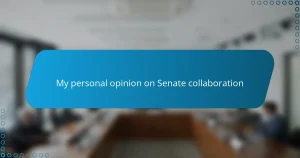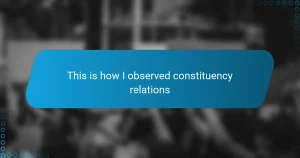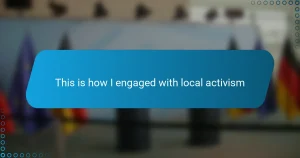Key takeaways
- Voter engagement relies on personal connections and emotional appeal, making individuals feel empowered to vote.
- Common strategies include door-to-door canvassing, digital outreach, and phone banking, all aimed at overcoming barriers like apathy and misinformation.
- Challenges such as accessibility, confusion about the voting process, and the need for clear communication hinder voter participation.
- Improvements should focus on convenience, personalized outreach, and providing straightforward information to enhance trust and participation.

Understanding voter engagement efforts
Voter engagement efforts, in my view, are all about connecting with people in a way that makes voting feel relevant and important to their lives. I remember the first time I truly noticed these efforts—door-to-door canvassing in my neighborhood felt surprisingly personal, as if someone genuinely cared about my voice. Have you ever wondered why some campaigns seem to resonate more than others? I think it’s because they meet voters where they are and spark a sense of responsibility and hope.
What fascinates me about these efforts is how varied they can be: from digital outreach and social media campaigns to community events and phone banking. Each approach tries to break down different barriers, be it misinformation, apathy, or accessibility. I’ve seen firsthand how a well-timed text or a heartfelt conversation can change someone’s mind about voting, proving that engagement isn’t just about information—it’s about inspiration.
At the core, understanding voter engagement means recognizing the emotional and practical hurdles people face. It’s not just about casting a ballot; it’s about feeling empowered to do so. When I reflect on my own voting experiences, the encouragement I received made all the difference—so why wouldn’t that be true for others? This is why effective voter engagement must be both strategic and deeply human.
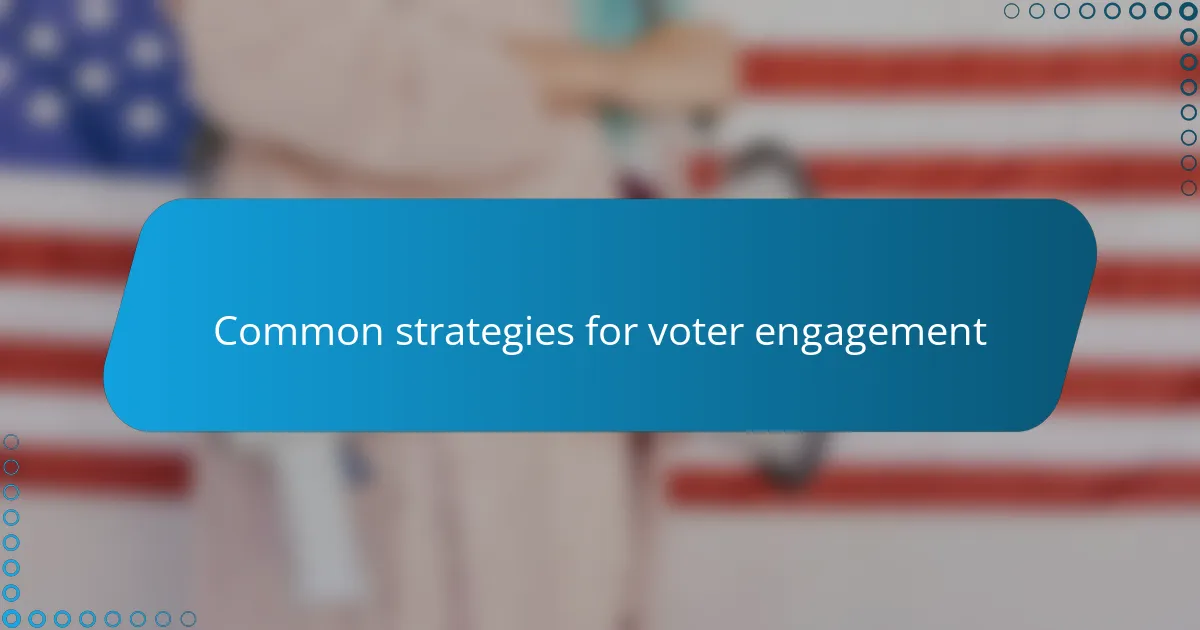
Common strategies for voter engagement
One of the most common strategies I’ve noticed is door-to-door canvassing. It’s a classic, but there’s something about a face-to-face conversation that really sticks with me. When someone takes the time to knock on your door and talk about why voting matters, it feels less like a political pitch and more like a neighbor looking out for you.
Then there’s digital outreach, which has grown tremendously in recent years. I often wonder, how effective can a tweet or a Facebook post be? From my experience, when these messages are personal and timely—like a reminder about registration deadlines or polling locations—they can cut through the noise and give that extra nudge to go vote.
Phone banking adds another layer to these efforts. I’ve answered calls where the volunteer’s enthusiasm was infectious, and even though I wasn’t planning to vote initially, the genuine interest in my perspective made me reconsider. It made me realize that voter engagement isn’t just about numbers; it’s about building a connection.
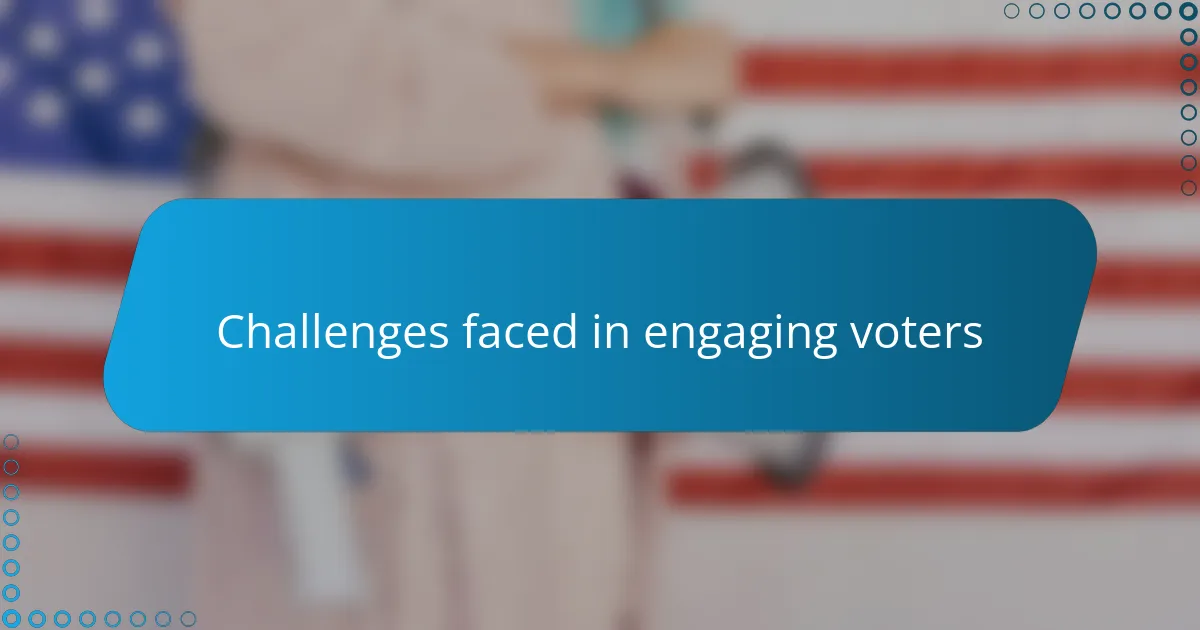
Challenges faced in engaging voters
One of the biggest challenges I’ve noticed in engaging voters is overcoming apathy. Have you ever felt like your vote doesn’t matter or that politics is just too complicated? I’ve been there, and I think many people tune out because they don’t see the immediate impact. Breaking through that sense of indifference takes more than just information—it requires tapping into what genuinely motivates someone.
Another hurdle is misinformation and confusion about the voting process. I’ve talked to folks who were unsure about registration deadlines or what identification they needed. It’s frustrating when these barriers cause people to give up before they even start. In my experience, clear, straightforward communication is crucial, but even then, trust plays a huge role—people have to believe they’re getting accurate and impartial help.
Accessibility also stands out as a significant obstacle. Not everyone has flexible work hours, reliable transportation, or the ability to take time off to vote. I once helped a neighbor who was worried about missing work on Election Day, and it made me realize how social and economic factors can quietly suppress turnout. If engagement efforts don’t address these real-life constraints, they risk preaching to the choir rather than reaching those who need the most encouragement.
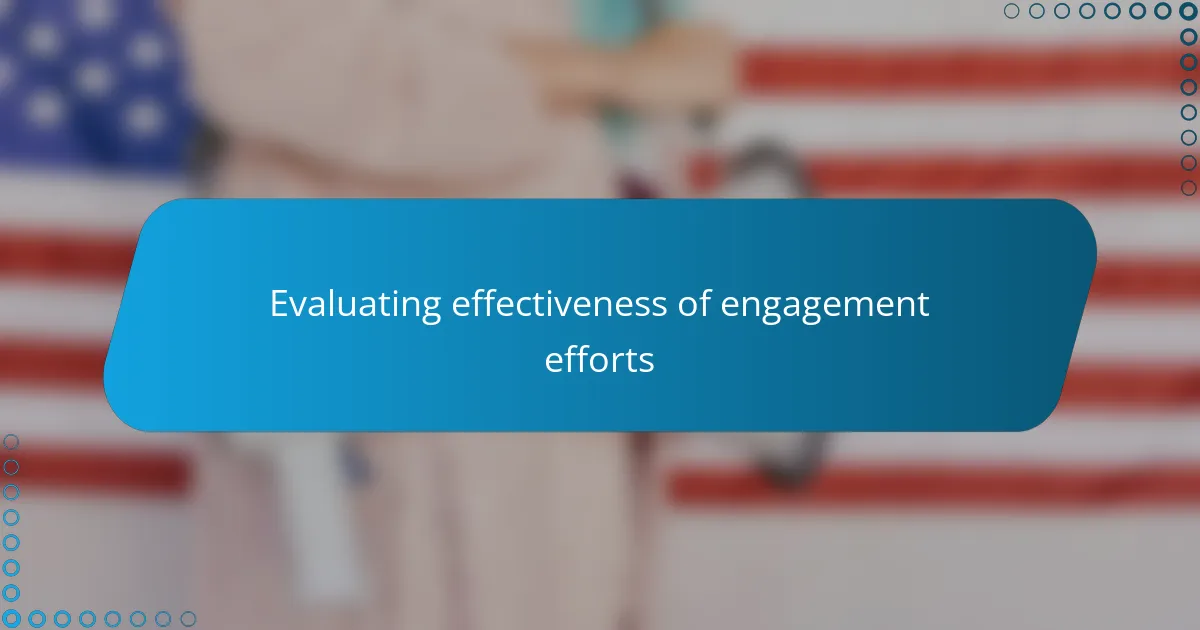
Evaluating effectiveness of engagement efforts
When I think about evaluating the effectiveness of voter engagement, I often ask myself: Are these efforts truly moving the needle on turnout? In my experience, it’s not just the number of contacts made but the quality of those interactions that matters most. I recall a campaign where thoughtful conversations led several hesitant voters to the polls, which felt like a real victory beyond mere statistics.
Measuring success can be tricky, though. How do you quantify inspiration or trust built through a heartfelt phone call? I’ve seen data showing increased registration rates, but numbers don’t always capture the emotional shifts that motivate someone to participate. That’s why I believe effectiveness requires looking at both tangible outcomes and the less visible change in voter attitude.
I’m also cautious about one-size-fits-all metrics. For instance, a strong social media push might spike engagement among younger voters, but what about communities facing accessibility challenges? From what I’ve observed, a truly effective strategy adapts to these nuances and continually reassesses its impact with feedback from the voters themselves. That kind of responsiveness, to me, defines meaningful success.

Personal experiences with voter engagement
I remember volunteering for a local voter engagement campaign and feeling surprised by how much a simple conversation could shift someone’s outlook. One elderly woman told me she hadn’t voted in years because she felt forgotten by the system, but after we talked about what was at stake, she promised to cast her ballot. Moments like that taught me that personal connection really matters.
There was also a time I tried texting reminders to friends before an election, and several responded saying it made all the difference—they’d almost forgotten about the date. It made me realize how small nudges can help overcome everyday distractions and hesitations. Have you ever felt a gentle reminder pushed you to take action you’d been putting off?
On the flip side, I’ve faced frustration too. I once encountered a neighbor who was eager to vote but confused about registration deadlines and polling places. Helping her navigate those details was rewarding, but it underscored for me how easily people can get lost in the process without clear guidance. Isn’t it a shame that so many willing voters are sidelined by avoidable obstacles?
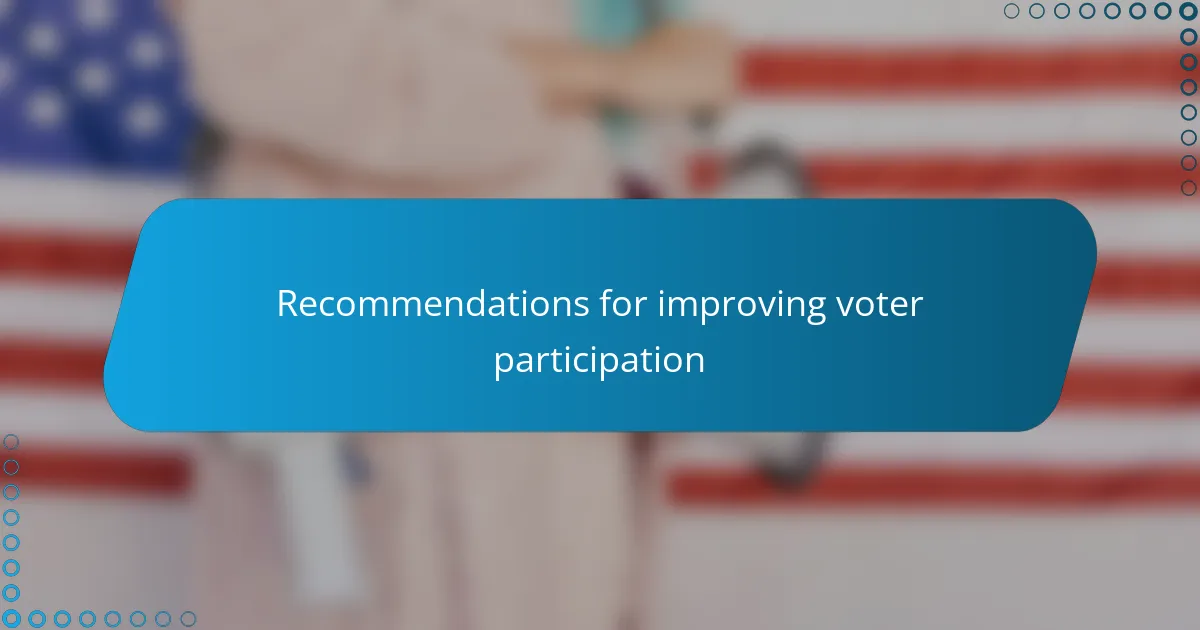
Recommendations for improving voter participation
If I had to recommend one change, it would be making voting as convenient as possible. Have you ever considered how much a simple extension of polling hours or more accessible early voting sites could help? From what I’ve seen, reducing these practical barriers often brings out voters who’ve wanted to participate but just couldn’t find the time.
Another approach I think deserves more attention is personalized outreach. Remember that elderly woman I mentioned who felt forgotten? Tailoring messages to speak directly to people’s concerns rather than sending generic reminders can make all the difference. It’s about making voters feel seen and valued, not just counted.
Lastly, providing clearer, straightforward information is crucial. I’ve watched neighbors hesitate simply because they weren’t sure how to register or what ID they needed. Wouldn’t you agree that a trusted source breaking down these details—not just on websites but through community networks—could really boost confidence and turnout? From my experience, clarity and trust go hand in hand when encouraging participation.
